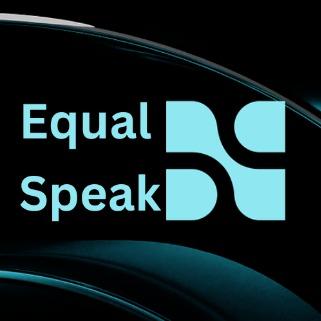EqualSpeak
AI-Powered Gender-Neutral Communication Assistant
Created on 15th September 2024
•
EqualSpeak
AI-Powered Gender-Neutral Communication Assistant
The problem EqualSpeak solves
The Problem it Solves:
Gender bias in communication is a deeply ingrained issue that affects workplaces, educational institutions, media, and everyday interactions. Unconscious biases in language can perpetuate gender inequality, limiting inclusivity and causing discomfort, often without the speaker or writer realizing it. Traditional approaches to addressing this problem have relied on post-event correction or training, which are slow and ineffective for real-time communication. There is a pressing need for a proactive solution that can analyze language and guide users towards more inclusive communication in real-time.
What Can People Use It For:
EqualSpeak solves this problem by providing a seamless and AI-powered solution for detecting and correcting gender-biased language in real time. Users can integrate EqualSpeak into their daily tasks, making communication more inclusive across various contexts. Whether it's drafting an email, creating corporate documents, or writing content for educational purposes, EqualSpeak provides instant feedback and suggestions for gender-neutral alternatives.
How EqualSpeak Makes Tasks Easier and Safer:
Real-Time Analysis: EqualSpeak analyzes language as you type, ensuring that any unconscious gender biases are flagged before the message is sent or the content is published.
User-Friendly Suggestions: With a simple click, users can replace biased terms with gender-neutral alternatives, making corrections seamless and reducing the cognitive load of editing.
Increased Inclusivity: By promoting gender-neutral language, EqualSpeak helps individuals and organizations foster more inclusive and respectful environments, making communications safer for all participants.
Education on the Go: Beyond correction, EqualSpeak provides explanations for why certain terms are considered biased, helping users understand and internalize the principles of gender-neutral language.
Challenges we ran into
During the development of EqualSpeak, one of the major challenges we faced was the complexity of detecting subtle gender biases in natural language. While obvious terms like “he/she” or gendered job titles were relatively straightforward to identify, more nuanced biases embedded in sentence structure, cultural idioms, or context posed a significant hurdle. Language is fluid, and biases can manifest in ways that are context-dependent, making it difficult for an algorithm to consistently and accurately detect these instances.
Tracks Applied (1)
GaiaNet
Hackquest
